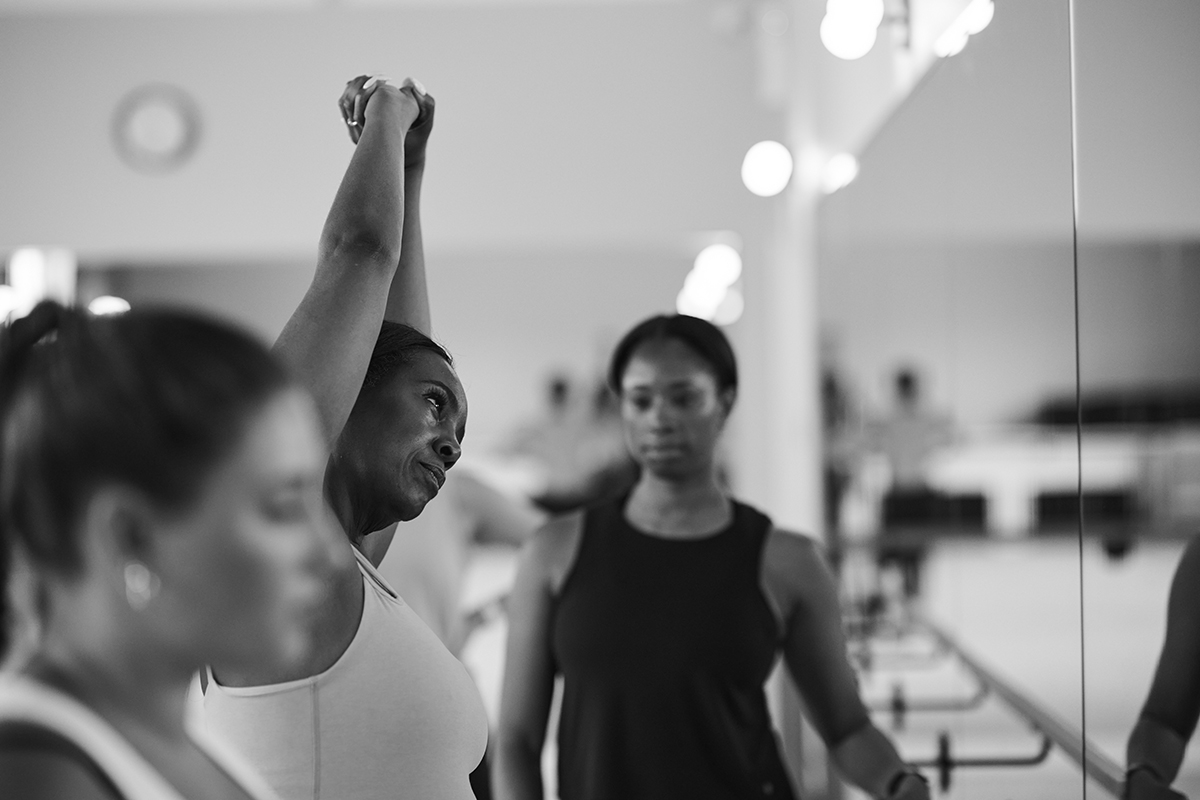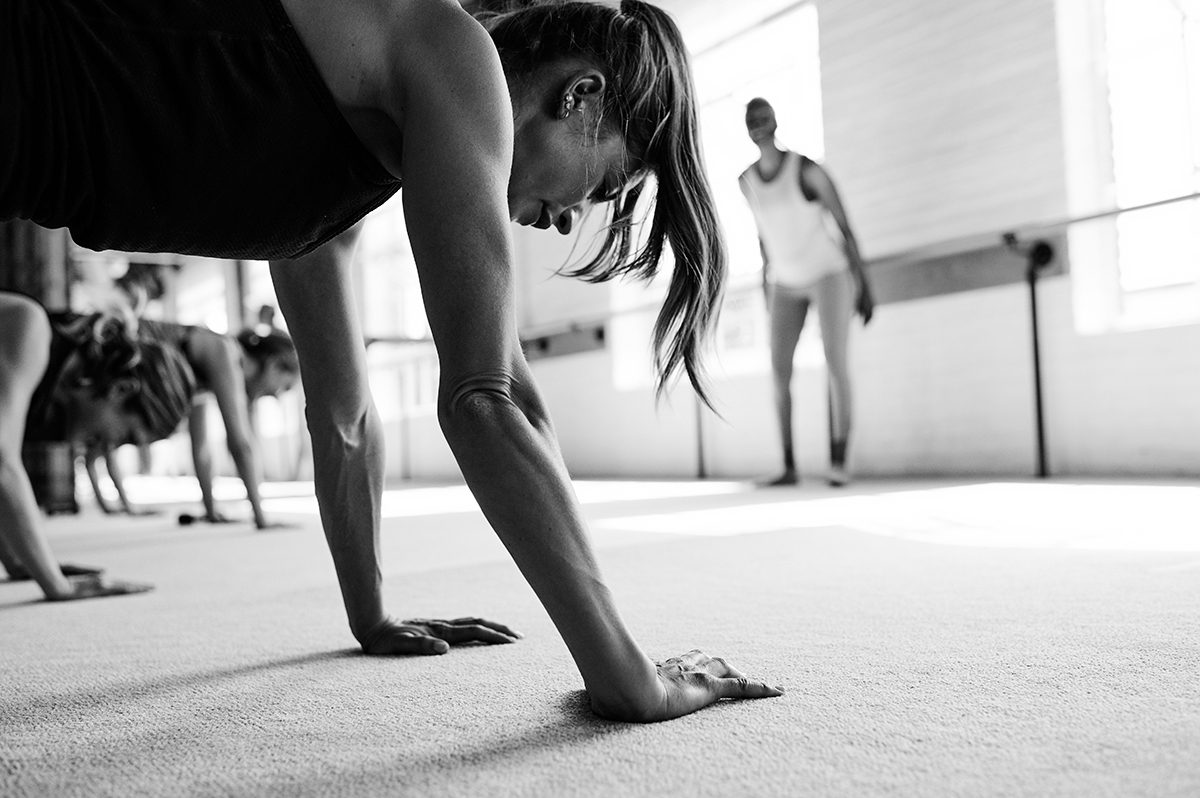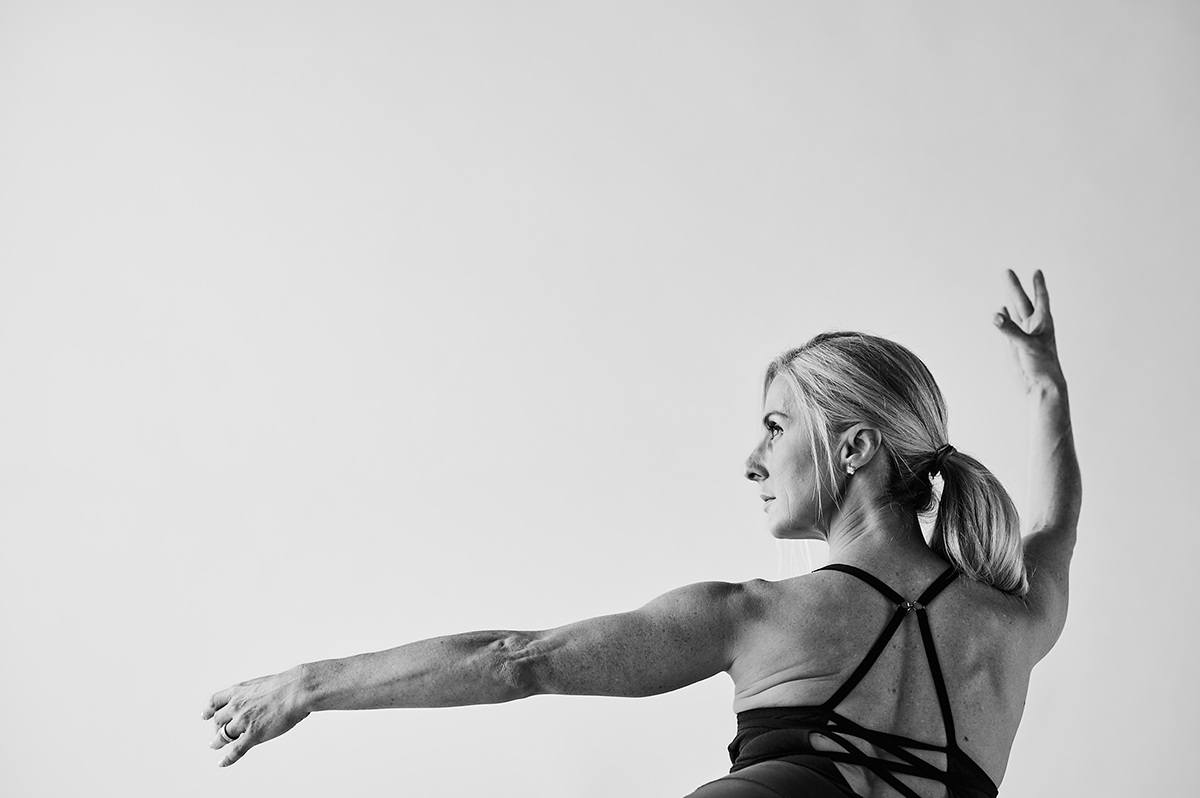New clients! For a limited time, Get 13 Classes for $78 (only $6 per class)
The Essentials of Muscle Healing

One of the many benefits of building strength and stamina at the Bar Method is that you fortify your body against injury. The strength, flexibility, joint stability, and enhanced coordination you gain in barre classes greatly reduce the likelihood that you’ll tweak, strain, sprain, or tear something — especially muscles.
Even so, injuries can happen to anybody, no matter their level of fitness. The good news is that your body is equipped with its own EMS service, which rushes to the scene after you’re injured to start helping your body heal. You can even speed up your recovery by getting more familiar with your built-in healing system.
Did you know that barre classes aid in the muscle strengthening and repair process? Before we dive into the interesting and powerful stages of muscle healing and what you can do to speed up the muscle strain recovery process, let’s cover some of the basics about muscles and their role in our bodies.
What muscles do in the body
Muscles are responsible for some of the most important bodily functions — from allowing movement and maintaining posture to stabilizing joints and producing heat. And, of course, pumping blood through the body!
The three types of muscles — cardiac, smooth, and skeletal — all have essential roles in our bodies, but when we talk about muscle healing and regeneration, we’re specifically talking about the skeletal muscles, which make up 40% of your body. The strongest skeletal muscles in the body, and often the ones most commonly injured, include the glutes, quads, and the masseter, the muscle in your jaw responsible for chewing. How you care for these muscles in everyday life, during regular workouts, and post-injury is key to long-term health.
The muscle strain recovery process
In “The Wolverine,” actor Hugh Jackman’s character develops mutant superhuman healing powers after being doused by radiation from an atomic bomb. His regenerative powers are actually less science fiction than you might think. Our bodies can really do what his did, only not nearly so quickly or on such a large scale. Regenerating live tissue is a means of survival, which is why our bodies have evolved two complementary healing systems.
Muscle regeneration
So, how do muscles actually repair? The first healing system, regeneration, is in essence the same regrowth technique as the Wolverine’s — namely, by means of tissue regeneration, which works with smaller scale injuries like a muscle strain or minor tear.
Regeneration even happens without an injury like when you’re sore after an intense workout — including that signature shake you experience in our barre classes when certain muscles are precisely targeted. Our body begins to knit together the microtears in those sore or exhausted muscles, helping them heal and grow stronger over time.
According to a study by The Journal Of Experimenal Orthopaedics, there are three main stages in muscle healing and regeneration:
- Destruction (inflammatory response)
- Regeneration (activation and proliferation of new cells)
- Remodeling (continued regeneration of muscle cells)
The study notes that muscle regeneration begins during the first 4 or 5 days post-injury, peaking at 2 weeks, and then gradually slowing down about a month after the injury. So, you’re looking at 6+ weeks of muscle tear healing time.
During that time, many factors come into play when determining how well muscle damage regeneration will occur, including:
- Acute or chronic injury
- Single or repetitive strain
- Volume and placement of tissue injured
- Age of the individual
The Bar Method shake
For those new to our barre method, our instructors talk a lot about the signature “shake” that happens when you challenge your muscle endurance by holding contractions for longer periods of time before coming out of the move, changing positions, or stretching.
A sustained hold causes the muscle to burn through its fuel reserves to the point of exhaustion. Once that fuel is almost depleted, the muscle starts relaxing and contracting — aka shaking — to conserve the remaining energy and help you hold the position for those last 20 to 30 counts. The more you practice barre, the more your muscle strength and endurance will increase.
Inflammation and muscle healing
The most crucial part of muscle healing and regeneration is how quickly and thoroughly you address inflammation post-injury. According to research from the National Institutes of Health, “the timing by which inflammation is resolved has a major impact on functional recovery.”
Inflammation is an immune response in the body to help fight infection and heal damaged tissue. In the case of a muscle injury, quickly reducing inflammation ensures the blood flow in your body isn’t slowed, a really important part of helping support muscle tissue healing.
You’re probably familiar with the R.I.C.E. protocol — rest, ice, compression, elevation — to help tissues begin to heal post-injury. While there has been debate about the efficacy of this protocol in modern sports medicine, research from The International Journal of Sports Medicine underscores the importance of regularly icing a muscle injury in the acute stage (immediately and up to 12 hours post-injury) to speed up recovery and reduce the risk of additional damage in the surrounding tissue.
Other important ways to help the body decrease inflammation include:
- Stay hydrated
- Eat a protein-rich diet to help muscles repair and grow
- Prioritize sleep
How muscle repairs itself
Repair is our body’s other healing system. The repair system doesn’t generate new tissue, but instead, it grows scar tissue to patch up injuries that are too large for us to fix with new cells of the original type.
During repair, your body sends collagen to the wound and scar tissue begins to form. According to The Journal of Sports Medicine fibrosis — the formation of fibrous connective tissue — happens when scar tissue begins to form 2 to 3 weeks after injury.
While fibrous scar tissue is important to support healed tissue early on, its presence later in the process of healing can have a negative effect on muscle function. Scar tissue is fibrous and dense, so it doesn’t stretch and contract like healthy muscle fibers. That means movement and stretching are essential throughout the healing process to assure your body can repair itself fully without leading to fibrosis, which can weaken muscles.
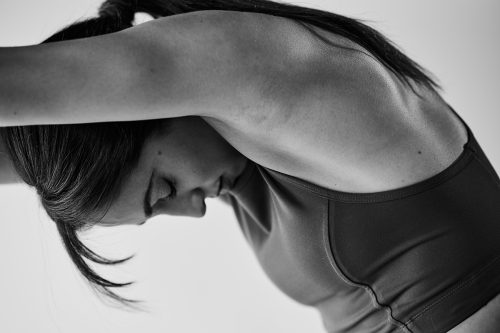
Caring for scar tissue for optimal muscle healing
Once scar tissue has formed, you’ve got one more step to take to be thoroughly healed: remodeling. The reason you need to remodel your healing injury is that scar tissue first forms in a disorganized tangle. The body doesn’t know exactly how to arrange the collagen cells so that they become healthy tissue. For that reason, remodeling scar tissue is essential.
Keep your body moving to keep healing going
So, how do muscles repair? Movement! Rest only during the acute phase of the injury, then start to regularly move and stretch the area when it begins to feel better. Your scar tissue will stretch out and align itself with the neighboring tissue fibers, thereby gaining strength and suppleness. Injured muscles can result in a knot of scar tissue with limited mobility, and risk for reinjury. To avoid this, it is important to regularly move the muscle in a safe way.
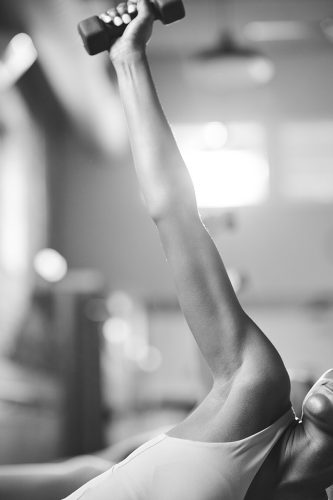
How and why muscles heal faster than ligaments and tendons
Since they’re responsible for blood flow — pumping oxygen and nutrients to the body and carrying away muscle waste to the kidneys — muscles heal faster than other tissues in the body. Muscles are also rich in nerves, so when you injure a muscle, it hurts! You may feel bruised, but muscle tissue bounces back well. Ligaments and tendons, on the other hand, have a harder time repairing quickly.
Ligaments and healing
Ligaments are different from muscles in distinct ways. They have much less blood flow and relatively few nerves. Ligaments attach bone to bone and help stabilize your joints (if you haven’t injured them too much!).
Tendons and healing
Tendons are often the most troublesome when it comes to healing. Tendons are at the ends of your muscles, usually around your joints. They attach muscles to bones and act kind of like pulleys, moving your bones when the muscle contracts. The problem with tendons is that they have little blood flow and a moderate amount of nerves, meaning that they don’t heal quickly — and when they hurt, they really hurt!
According to Mayo Clinic, it may take several months to heal from tendonitis, compared to 6 weeks for a muscle injury. Stubborn tendon issues typically need medical intervention. A good doctor or physical therapist can get you started on a regime of rest, medication, and stretching.
This may require you to modify movements in barre class. Our instructors are happy to help you find a modification, so feel free to share any injury you’re working through.
A final word on healing muscles
Now that we’ve covered how to heal a pulled muscle and the essential role that muscles play in our everyday life, you’ll know what to do (and when to seek medical attention) if you find yourself with a muscle in need of TLC.
Rest and downtime is a must in any recovery program, so know that it’s okay if you need to spend time away from your favorite barre studio to ensure you stay strong and healthy — just don’t wait too long to ease back into movement. When you’re ready to head back to the barre, our instructors will be there to make sure your training safely picks up right where you left off. That signature Bar Method burn awaits!
CTA: Want to learn about the powerful ways barre helps tone muscles and sculpt the body? Check out our article that breaks it all down, muscle group by muscle group.

